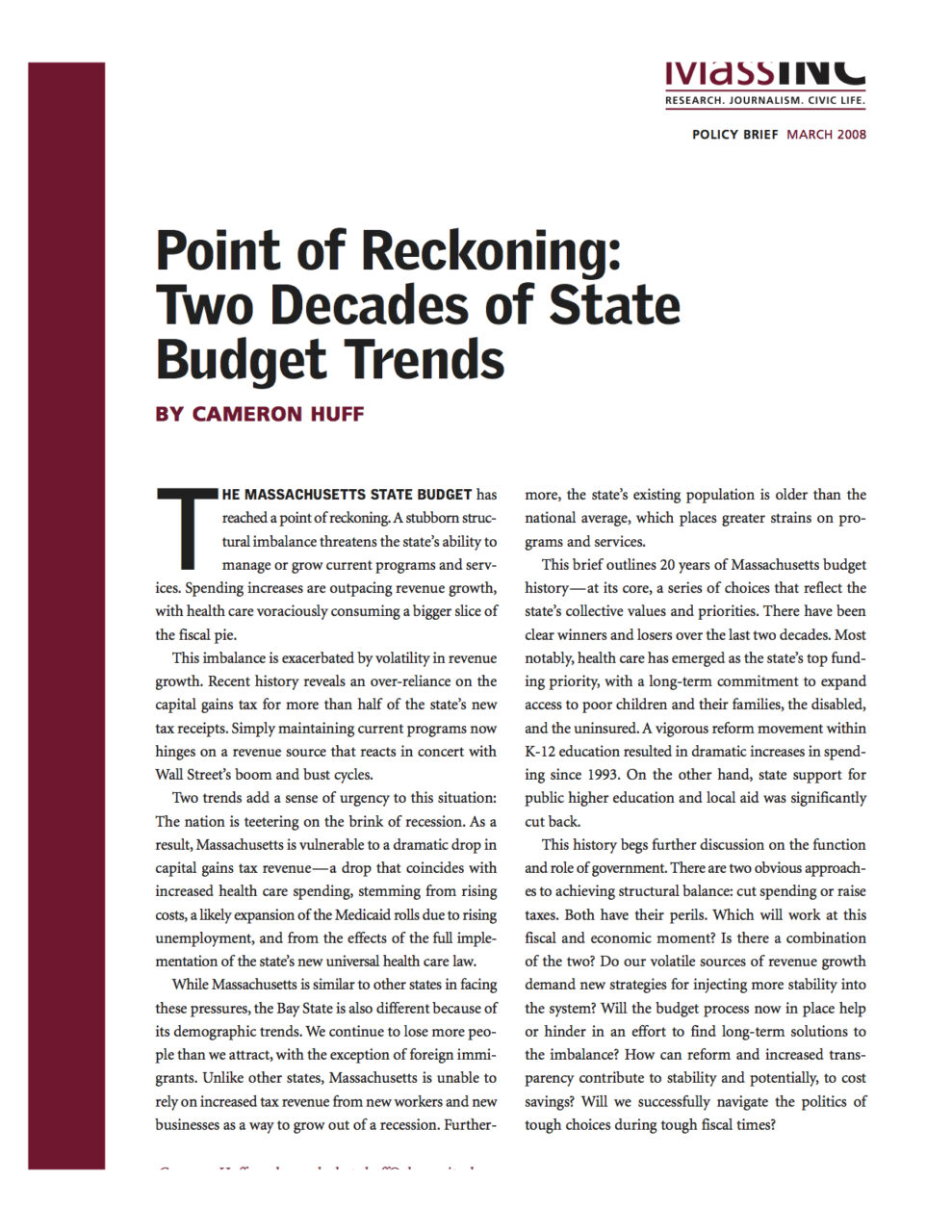The Massachusetts state budget has reached a point of reckoning. First and foremost, a stubborn structural imbalance threatens the state’s ability to manage or grow current programs and services. Spending increases are outpacing revenue growth, with health care voraciously consuming a more generous slice of the fiscal pie.
This imbalance is exacerbated by volatility in revenue growth. Recent history reveals an over-reliance on the capital gains tax for more than half of the state’s new tax receipts. In other words, simply maintaining current programs hinges on a revenue source that reacts in concert with Wall Street’s boom and bust cycles.
Two trends add a sense of urgency to this discussion: The nation is teetering on the brink of recession. As a result, Massachusetts is likely to experience a dramatic drop in capital gains tax revenue – a drop that could coincide with increased health care spending, first from an expansion of the Medicaid rolls due to rising unemployment and second, from the full implementation of the state’s new universal health care law.
While Massachusetts is similar to other states in facing these pressures, the Bay State is also different because of its demographic trends. We continue to lose more people than we attract, with the exception of foreign immigrants. Unlike other states, Massachusetts is unable to rely on increased tax revenue from new workers and new businesses as a way to grow out of a recession. Further, the state’s existing population is older than the national average, which places greater strains on programs and services.
This brief outlines 20 years of Massachusetts budget history – at its core, a series of choices that reflect the state’s collective values and priorities. There have been clear winners and losers. Most notably, health care has emerged as the state’s top funding priority, with a long-term commitment to expand access to the poor, disabled, and uninsured. A vigorous reform movement within K-12 education resulted in dramatic increases in spending since 1993. On the other hand, state support for public higher education and local aid was significantly cut back.
This history begs further discussion on the function and role of government. There are two obvious approaches to achieving structural balance: cut spending or raise taxes. Both have their perils. Which will work at this fiscal and economic moment? Is there a combination of the two? Do our volatile sources of revenue growth demand new strategies for injecting more stability into the system? How can reform and increased transparency contribute to stability and potentially, to cost savings?
